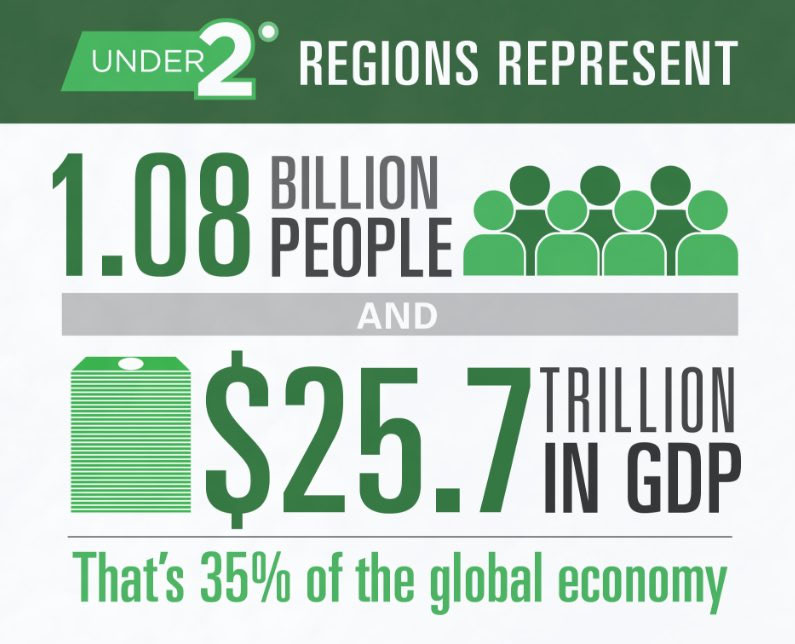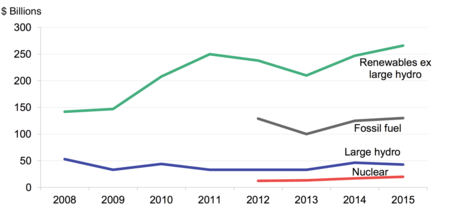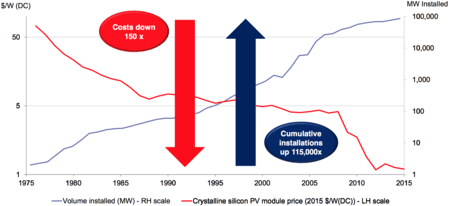This month, we attempt to address what the new administration might mean to leadership on climate change progress, energy and infrastructure investments.
Reason for Optimism: Making Climate Change Progress in a New Political Era
Expanded from the November 25th Sacramento Bee Op-Ed by Kate Meis (Executive Director, Local Government Commission) and Steve Hansen (Councilmember, City of Sacramento).
Elections change our leadership but they don’t change reality.
– Matthew Hamilton, Sustainability Director, Aspen Skiing Company
The election is over, and now we’re faced with serious questions about the potential effects of changes in legislative and budgetary support for environmental action.
To be clear, creating livable communities isn’t a partisan goal – under George W. Bush, for example, the budget for the EPA’s smart-growth programs more than doubled.
That said, the president-elect has worried smart-growth practitioners with his denouncement of climate change – threatening to eliminate the EPA and the Clean Power Plan and to pull the U.S. out of the Paris Agreements. Fears have been heightened by the appointment of climate contrarian Myron Ebell to lead the EPA transition.
This month, we attempt to address what the new administration might mean to leadership on climate change, energy and infrastructure investments.
Cities and States Lead the Way on Climate Change and Clean Energy
Initial indications are that the new administration’s energy plan has great potential to undermine the ability to hold global warming to 2 degrees Celsius – a threshold beyond which scientists tell us there would be irreversible harm. A national focus on increases in oil and coal production, reversing the Clean Power Plan and stripping the EPA of its power to work on climate change and air quality would severely damage the great progress that our nation has made in the past decades.
Yet, most climate-change leadership and innovative responses have always been driven at the state and local level – from the bipartisan U.S. Conference of Mayors Climate Protection Agreement in 2005 to California’s landmark AB 32 (signed by a Republican governor).

Governor Brown signed a first-of-its-kind agreement, the “Under 2 MOU,” with international leaders from 11 other states and provinces, collectively representing more than $25.7 trillion in GDP and over a billion people, to limit the increase in global average temperature to below 2 degrees Celsius.
While the Clean Power Plan may be at risk, states across the nation are pushing forward. According to a new report from the Georgetown Climate Center, between 2011 and 2014, wind-energy capacity grew by more than 40% nationally and solar capacity grew by 577% nationally.
Nationwide, states increased energy savings by 7% between 2013 and 2014. California and New York have established ambitious new midterm (2030 and beyond) energy-efficiency goals. Colorado, Delaware, New Hampshire, Rhode Island and Virginia have issued executive orders to improve the management of energy consumption. Massachusetts, Minnesota, Tennessee and Vermont, among other states, have set up funding streams to undertake in-state energy-efficiency projects.
California’s Global Warming Solutions Act (AB 32), and companion cap and trade program, has reduced greenhouse gas emissions by 7.3%, petroleum consumption by 14.3% and electricity use by 1.5% in the last decade, all while the population has grown and GDP has jumped 12.4%.
California isn’t alone – other states are also directly requiring cuts in carbon pollution. Washington State has adopted a Clean Air Rule that requires the largest carbon pollution sources in the state to reduce greenhouse gas emissions by 1.7% per year through 2035. New York has committed to reducing greenhouse gas pollution by 40 percent below 1990 levels by 2030, and Oregon has pledged to reduce greenhouse gas emissions by 80% to 95% by 2050.
The Regional Greenhouse Gas Initiative, a mandatory market-based program among the states of Connecticut, Delaware, Maine, Maryland, Massachusetts, New Hampshire, New York, Rhode Island and Vermont has reduced carbon pollution from the power sector 45% since 2005. And in 2016, Virginia Governor Terry McAuliffe issued an executive order requiring a working group to recommend steps by spring 2017 to reduce carbon emission from Virginia power plants. These actions have contributed to a 6% drop in overall U.S. greenhouse gas emissions from the power sector between 2012 and 2015.
Similar to California these state actions have brought significant economic and health benefits. For example, Nevada’s Renewable Energy Tax Abatement program has attracted more than $6.5 billion in economic benefits or in-state investments, and created more than 4,000 jobs paying an average of $41 per hour. In Michigan, for every $1 invested in energy-efficiency projects, homeowners and businesses receive $4 in benefits. In Oregon, air pollution reductions (specifically fine particulates) are expected to bring $3.5 billion in health benefits.
Some people have expressed concern about the viability of national fuel-economy standards under the new administration – here again many states with large car-buying markets have their own fuel-economy and emissions standards. Eleven other states voluntarily follow California Air Resources Board regulations: To sell cars in Connecticut, Maine, Maryland, Massachusetts, New Jersey, New York, Oregon, Pennsylvania, Rhode Island, Vermont and Washington, automakers must make California-compliant vehicles.
Business Doubles Down on Climate Commitments
Corporations recognize that a healthy environment and a strong economy are connected. Three hundred and sixty-five American companies including Mars, Nike, Levi Strauss and Starbucks, and major investors have urged President-elect Trump and Congress not to abandon the Paris climate pact, saying a failure by the United States to build a clean economy endangers American prosperity.
“Failure to build a low-carbon economy puts American prosperity at risk,” the companies said in a joint letter announced earlier this month in Marrakesh, where world leaders are determining the next steps for the Paris Agreement. “But the right action now will create jobs and boost U.S. competitiveness.”
The companies also indicated that they would push ahead with their own targets to reduce their carbon footprints, regardless of steps taken by the new administration.
Growing Market for Renewable Energy
While two years of crashing prices for oil, natural gas and coal triggered dramatic downsizing in those industries, clean-energy investments broke new records in 2015, and are now seeing double the funding into fossil-fuel companies, as renewable energy is becoming ever cheaper to produce.

Government subsidies have helped wind and solar get a foothold in global power markets, but economies of scale are the true driver of falling prices. The cost of solar power has fallen to 1/150th of its level in the 1970s, while the total amount of installed solar has soared 115,000-fold.
Solar-power generation is expected to increasingly dominate because it’s a technology, not a fuel. That means efficiency increases and prices fall as time goes on. What’s more, the price of batteries to store solar power when the sun isn’t shining is falling in a similarly stunning arc.
Public-private partnerships are helping catalyze investment in renewable energy and energy efficiency. For example, the HERO Property Assessed Clean Energy (PACE) program is available to 90% of California households, and has already helped invest $2 billion in completed projects, and create more than 16,000 jobs. Over the lifetime of these improvements, we will avoid 3.3 million tons of CO2 emissions, save 6.8 billion gallons of water, and cut $3.3 billion from utility bills.

Meanwhile coal prices are going to continue to fall- according to the EIA, in 2015 U.S. power plants burned 740 million tons of coal-dropping 13 percent from 2014, and 26 percent since 2005.
Infrastructure Investments will Continue
One of Trump’s top campaign promises – a trillion-dollar, 10-year infrastructure program to rebuild highways, tunnels, bridges and airports – would rely on tax credits and public-private partnerships to spur investment in transportation projects.
Alternative-transportation supporters question what role transit, bicycling and walking will play in the administration’s approach.
The good(?) news is that cities and counties have increasingly realized that they can’t depend on the federal government to meet their needs, and have been putting measures on the ballot to fund their own regional transportation priorities.
According to T4 America, voters approved 75% of local ballot measures on November 8, proving once again that Americans want transportation options.
Representing more than $150 billion of the more than $200 billion in local transportation measures on this month’s ballots, residents in Los Angeles and Seattle approved initiatives that will make enormous decades-long expansions in local and regional transit. In LA’s case, an overwhelming number of voters (nearly 70%) said “YES” to investing more of their tax dollars in public transit through a new half-cent sales tax (Measure M) and extending an existing half-cent transit tax (Measure R, 2009) in perpetuity.
Read more on how ballot measures fared nationwide in 2016: http://t4america.org/maps-tools/state-policy-funding/2016-votes/
The Journey Ahead: Hold the Line, Push Forward
We have some difficult times and difficult conversations ahead to overcome the growing divisions (between parties, between rural and urban areas, between races). Ultimately, our success will depend on our ability to listen deeply and with empathy to opinions we don’t hold and to strongly hold the line with care and compassion when it’s needed.
American’s are resilient and we’re accustomed to triumphing under adversity. Our nation needs the leadership from states like California now more than ever – to continue to protect each other’s rights (particularly the rights of the poor, people of color, immigrants, women and LGBTQ) and maintain hard-won environmental protections.
We’re all in this together, rich or poor, north or south, red or blue, and we have a communal responsibility to protect our communities, natural resources and the industries that energize our Golden State.
Local Government Commission Newsletters
Livable Places Update
CURRENTS Newsletter
CivicSpark™ Newsletter
LGC Newsletters
Keep up to date with LGC’s newsletters!
Livable Places Update – April
April’s article: Microtransit: Right-Sizing Transportation to Improve Community Mobility
Currents: Spring 2019
Currents provides readers with current information on energy issues affecting local governments in California.
CivicSpark Newsletter – March
This monthly CivicSpark newsletter features updates on CivicSpark projects and highlights.



